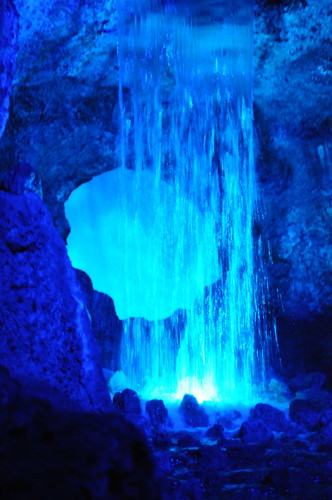Everyone loves the Pirates of the Caribbean ride. What's not to like? Great atmosphere. Interesting experiences. Catchy pirate shanties. Log flume drops. Dogs of both the cute and scurvy varieties.
When you first leave the Louisiana bayou and ride your little boat down a waterfall, you find yourself in a cavern. It's gray, and rocky, with pools and a few waterfalls around. Not a single pirate to be seen, and none of the set pieces that flesh out the rest of the ride. You turn a corner, and then go down another waterfall before you start seeing anything related to pirates. On paper, it seems boring.
 |
| Photo of "Pirates of the Caribbean" ride by Joe_B@flickr |
How do we translate these sorts of things to a game? It's a difficult balance to strike - too little stage-setting, and there's not enough to have that effect. Too much, and it feels like there's not enough content. And how to strike that balance in a procedural context, too - that's even harder.
In Lone Spelunker, I'm hoping that much of this will emerge naturally by imposing some sparseness on the frequency with which "troves" of interesting details are doled out. One might be tempted to fill every room with something of interest, but that would make those "troves" meaningless. On the other end of the spectrum, one might be tempted to only have one trove in each cave, thus drawing out the replayability of the game, but that has the potential to make the game feel "grindy", artificially forcing players to go through rote activities to "get to the good stuff".
I'm shooting for having several troves emerge during play. Unless you generate a truly immense cave system, not all troves will appear in any given cave. You'll have to work for most of the troves, but there will be several in each cave, and some will come easily to lead you along. Tweaking the frequencies of these troves is going to be one of the "balancing" acts of designing this game - every game has them - and hopefully, I'll get that balance right to make gameplay exciting and rewarding.
No comments:
Post a Comment